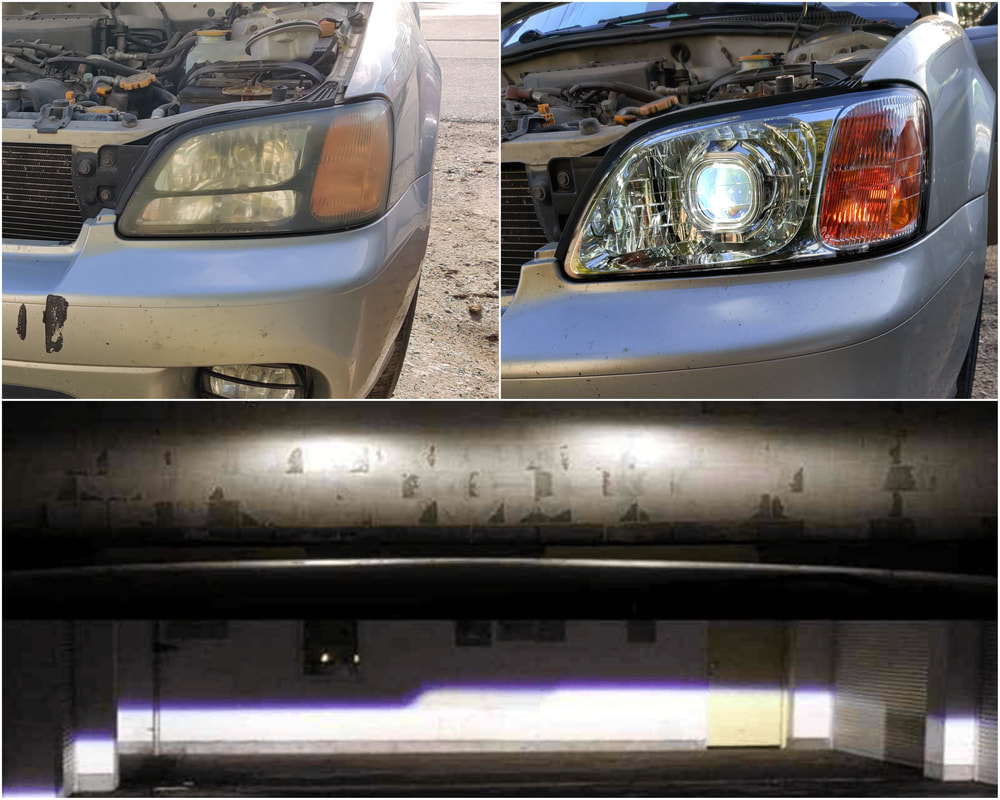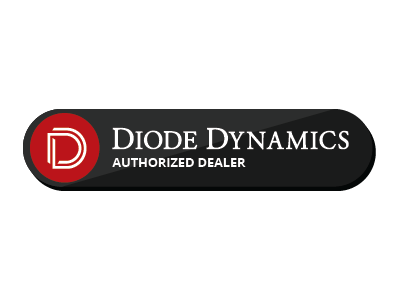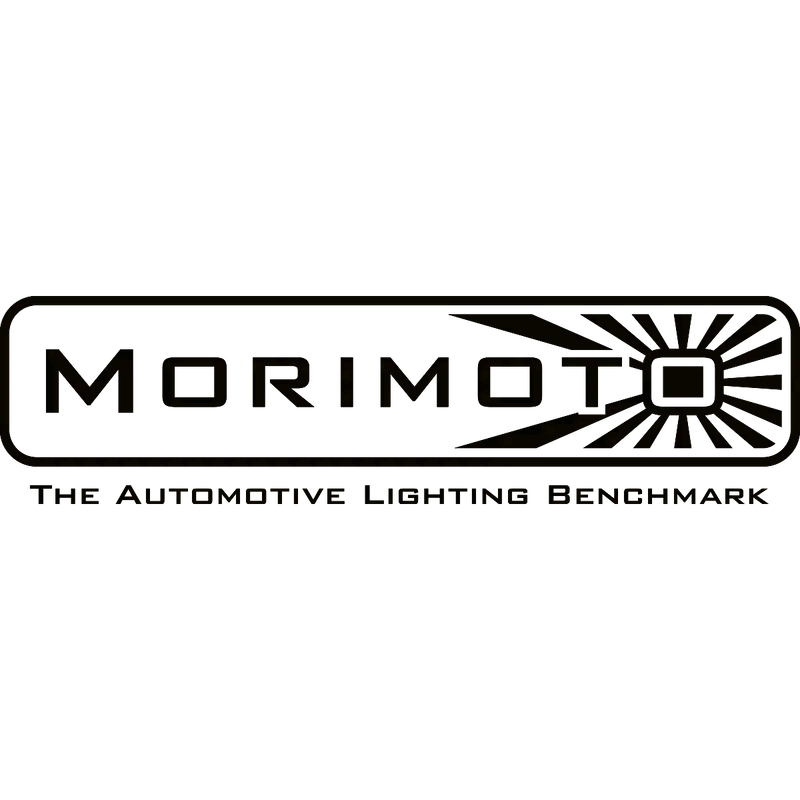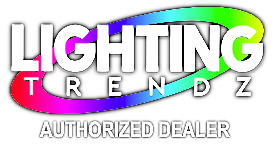FAQs
What is a retrofit, and do I need one?
A retrofit is a headlight conversion that replaces the original headlight bulbs and optics with modern, state-of-the-art projector optics. Projector and reflector technology are two different ways of focusing light onto the road, and modern day projectors are far superior to anything OEM cars have come standard with since day 1.
|
There are many benefits to retrofitted projectors, whether your vehicle began with halogen type reflectors, projectors, or even HID projectors.
In comparison to any halogen reflector headlight, and many OEM projector headlights, upgraded projectors offer significantly better light distribution. What does this mean for you? A cleaner cutoff helps prevent glare to other driver's eyes, flashing you less often. The center 'hotspot' of light, that is, the light that needs to project further down the road for great visibility at high speed, is much more intense and well positioned with modern projectors. Aftermarket HID projectors also feature very wide distributions of light toward their edges, lighting up deer and other ditch dangers commonly found in the dark back roads of the Inland Northwest. Even if your car originally came with a projector system, chances are the output is still subpar. OEM projector optics degrade over time, especially if you or a previous owner tried to use a higher wattage halogen or HID system inside them. Plus, they are designed to meet outdated DOT standards for light output, and often are not made to have the brightest or widest output possible. |
Even if you're not into halos, lens etching, or other fancy aesthetics, a basic projector retrofit is always worth it for the increase in safety and performance.
What does Switchback, RGB, and Flow Series RGBW mean?
There are many types of LEDs and it can be tough to know which kind you want (or need!) on your build. Here's a quick breakdown of the types of LED you'll commonly see in our builds and product pages:
|
|
- Flow Series RGBW: These are LED products that are also fully color shifting with RGB LEDs, but they incorporate a tiny processor on every LED chip. In this way, combined with the powerful BlueGhozt 2.0 controller, each individual LED can be a different color than the rest at any time. This allows for "flowing" or "chasing" animated patterns, as well as sequential turn signals, startup animations, and solid colors too. These are the most expensive but most flexible products we offer.
What do all the add-ons for a headlight build look like?
Most headlights we offer have several customization options available once you're chosen your main low and high beam configuration. Almost all of them are purely aesthetic - if you're just looking for a performance build and nothing more, you can likely ignore them. We offer as many in-house customizations as possible so you can truly create something that represents your style and flows with the rest of your build perfectly. Most of the common options we offer are detailed below - not every type of add-on is available in all headlights. If you have further questions or want to request something even more unique not shown here, contact us!
|
Specialty Halos: Also known as "angel eyes", this is an LED accent mounted in front of each projector in your headlights. We offer them in a variety of shapes such as circle, 3/4 hex, X style, heart, and more, as well as a variety of LED types to match and sync with the rest of the LEDs in your build. Not all shapes or sizes are available in some more compact lights.
|
|
3D Acrylic Gills: These premium accents are designed to cover up unused OEM high beam or turn signal areas with custom laser-cut acrylic panels. These panels use 3D translucent sheets with an LED backlight behind for a modern style and more aggressive appearance. We can also manufacture custom designs such as 3D hearts, hexes, and even logos!
|
|
Lens Etching: One of the few add-ons that doesn't emit any light on its own, this is a great way to add a personal touch to your build. We can engrave almost any pattern, logo, text, or design onto the projector lenses in any headlight or fog light assembly. When your low beams are activated, the etched portions will appear to glow - pair with demon eyes for even more control over the times and colors the etching can best be seen in!
|
How long do aftermarket headlights last?
OEM and OEM replica headlamps (TYC, DEPO, etc.) are always tested and certified for superior housing and lens quality. Many cheaper aftermarket headlight housings are not tested or designed to the same levels of quality and will often experience clear coat fading, lens yellowing, ‘spider webbing’, or micro scratches. It is highly recommended to have a local shop install a protective film or ceramic coating to keep the lenses clear and damage free for as long as possible if your build is based on aftermarket headlights.
What is condensation?
Condensation (fogging, moisture, water ingress) is a common issue with any headlight or taillight product, and can even occur in unmodified OEM housings. When there is sudden or significant difference in humidity or temperature between the air trapped inside the housing, and the air touching the exterior of the lens, moisture can condense onto the lens and appear as a fog or tiny water drops. If your product experiences condensation during a change in weather or humidity, or immediately after receiving a shipment, remove the rear dust caps and sockets, activate your lights to heat up the internals, and allow the housings to dry fully before reinstalling all caps and seals securely. Your headlights have been designed to include several humidity vents, 'breathing' patches, and a full butyl seal around the lens to best prevent condensation build up. These work together to allow air inside the headlight with excess moisture to slowly vent out into the environment and equalize with external conditions. However, even with as many preventative measures as we include on your build, there is always a chance condensation will occur. Condensation may take days or weeks to disappear as the air inside your lights changes to match your environment.
Please note, our 1 year builder's warranty does not cover moisture issues concerning light fogging or other effects from regional air differences. If you are experiencing water leakage or large droplets or pools of water appearing inside your headlight, especially during or immediately following rain, car washes, etc., this is a sign of a problem with the seal and is likely covered under our warranty. First double check that all rear dust caps and bulb sockets are installed fully and correctly as this can be a common place for water to enter in.
Please note, our 1 year builder's warranty does not cover moisture issues concerning light fogging or other effects from regional air differences. If you are experiencing water leakage or large droplets or pools of water appearing inside your headlight, especially during or immediately following rain, car washes, etc., this is a sign of a problem with the seal and is likely covered under our warranty. First double check that all rear dust caps and bulb sockets are installed fully and correctly as this can be a common place for water to enter in.
How do I properly aim my headlights?
|
Your custom headlights have been modified and designed with higher output components which have been rotationally aimed as accurately as possible using the original halogen output pattern from the base assembly. However, the vertical and horizontal aim of your headlights is generally not going to be 100% correct for your vehicle upon shipment, and during installation it is advised to check the aim of your headlights for legal compliance and maximum utilization of the low and high beam optics. You'll find adjustment knobs for the horizontal and vertical aim of your headlights on the back of each housing, often accessible from above without removing any parts of your car.
|
|
What's the warranty and lifespan of my LEDs?
If your build includes demon eyes of any kind, please ensure you shut them off prior to and during use of your normal low or high beams, and do not use them for several minutes after turning off your headlights. High temperatures drastically reduce demon eye PCB lifespans. Our demon eyes are wired to automatically shut off when the low beams are triggered, but for their protection please be certain to keep them off for a short period after the headlights are turned off to let the projectors and surrounding housing cool.
Some components are more prone to failure than others. LED/HID setups last a very long time and have long warranty periods to reflect that. RGB/RGBW LED accents fail occasionally, but we only use products from reputable manufacturers such as Diode Dynamics and Profile that also carry great warranties. Addressable RGB and sequential white/yellow LEDs have a much higher failure rate, and while we bench test custom addressable setups for 48 continuous hours before shipment, no guarantee can be made on their lifespan. We only use quality tested products, and design our addressable strips with maximum heat dispersion and brightness in mind, but regardless some neopixels can burn out in weeks while others will last for years.
In the event of a warranty-covered failure of any type, you are responsible for securely and safely packaging the affected parts and shipping them back to us. We recommend using an online service such as PirateShip for the best return shipping rates. If the failure is related to Foxbeam workmanship and covered within warranty, the affected parts and functionality will be repaired at no cost to you, and we will pay the cost of shipping the repaired part back to you. If the failure is not due to workmanship, but a component is covered under the original manufacturers warranty, you will be responsible for the labor cost to replace the part, but not the cost of the parts themselves. We will still pay shipping back to you. If the failure is outside the warranty period or is a component not covered by our warranty, you will be responsible for the labor cost and any replacement parts involved, as well as return shipping. Keeping the build queue moving consistently takes time, and warranty work is appropriately factored into this schedule. Aftermarket lighting is an investment, and even the most reliable brands we use experience odd failures every once in a while. We strive for quality in all of our products and are happy to work with you quickly to resolve any issues. If you have any questions about the brands we use or their individual warranties please contact us.
Some components are more prone to failure than others. LED/HID setups last a very long time and have long warranty periods to reflect that. RGB/RGBW LED accents fail occasionally, but we only use products from reputable manufacturers such as Diode Dynamics and Profile that also carry great warranties. Addressable RGB and sequential white/yellow LEDs have a much higher failure rate, and while we bench test custom addressable setups for 48 continuous hours before shipment, no guarantee can be made on their lifespan. We only use quality tested products, and design our addressable strips with maximum heat dispersion and brightness in mind, but regardless some neopixels can burn out in weeks while others will last for years.
In the event of a warranty-covered failure of any type, you are responsible for securely and safely packaging the affected parts and shipping them back to us. We recommend using an online service such as PirateShip for the best return shipping rates. If the failure is related to Foxbeam workmanship and covered within warranty, the affected parts and functionality will be repaired at no cost to you, and we will pay the cost of shipping the repaired part back to you. If the failure is not due to workmanship, but a component is covered under the original manufacturers warranty, you will be responsible for the labor cost to replace the part, but not the cost of the parts themselves. We will still pay shipping back to you. If the failure is outside the warranty period or is a component not covered by our warranty, you will be responsible for the labor cost and any replacement parts involved, as well as return shipping. Keeping the build queue moving consistently takes time, and warranty work is appropriately factored into this schedule. Aftermarket lighting is an investment, and even the most reliable brands we use experience odd failures every once in a while. We strive for quality in all of our products and are happy to work with you quickly to resolve any issues. If you have any questions about the brands we use or their individual warranties please contact us.









